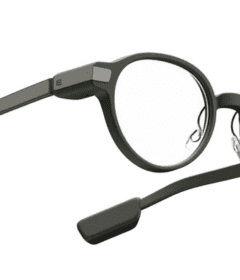Building a Wine Room
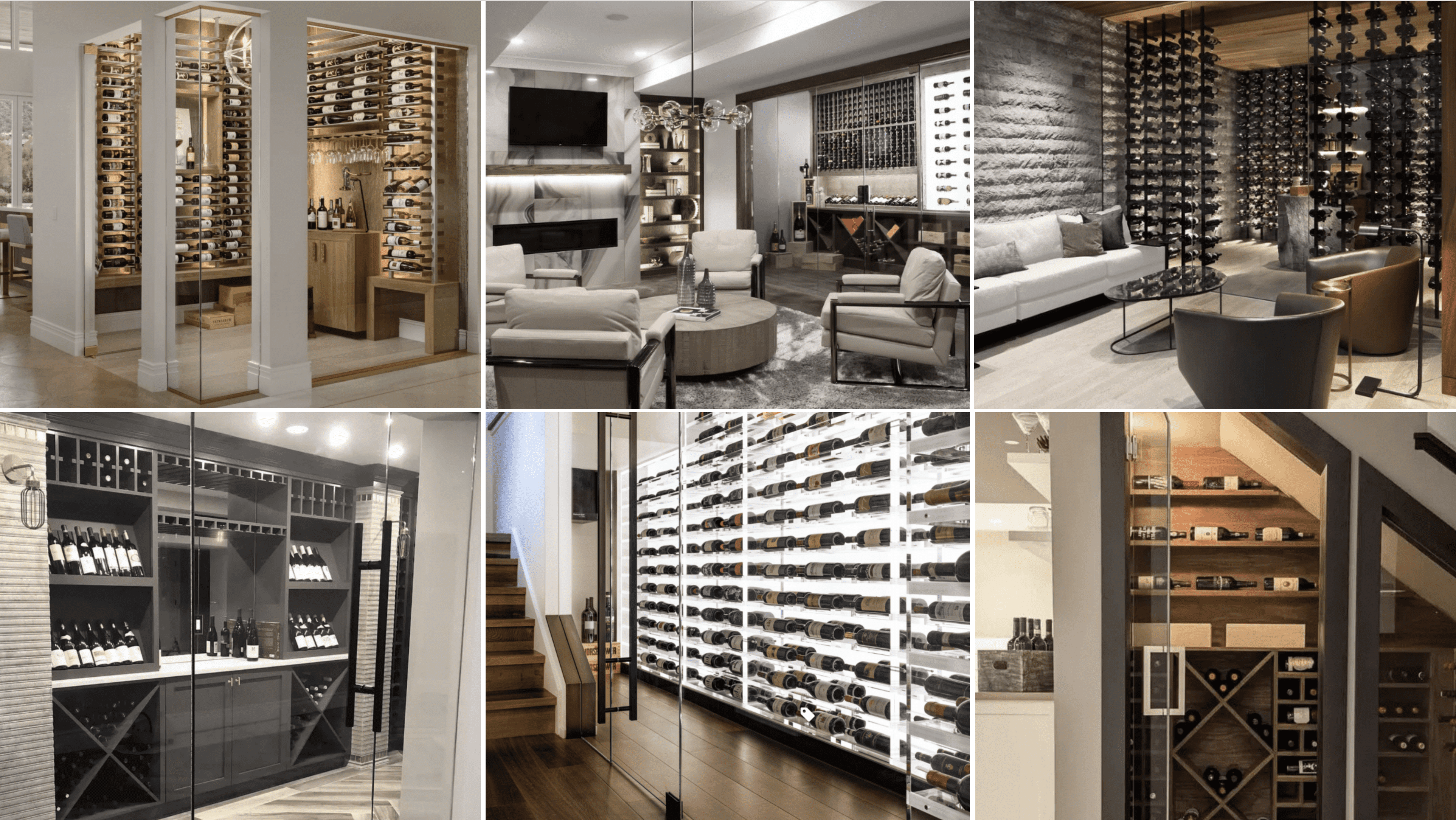
Building a Wine Room – Optimally housing and caring for a wine collection requires more than just a pretty room.
Whether a household drinks 300 bottles a year or 30, an uninformed design layout can end up having a permanent effect on a home’s overall performance.
Often, designers are not aware of the needs of wine collecting, resulting in storage and display that may be aesthetically pleasing, but does not preserve the bottles as they should or address a particular client’s drinking or entertaining style.
Building a Wine Room – Quick Math
If you open four bottles a week for yourself that’s 200 bottles a year.
If you throw a dinner party of four to eight people once a month, that’s another 100 bottles a year.
And, if you give wine regularly as gifts—another 50 bottles a year.
That’s 300 to 350 bottles annually, and not at all unusual.
But it’s common to have space for less than 1,000 bottles, which makes their ability to turn over very tricky.
In this high turnover environment, you may be inclined to buy more mature wines, from auction or consignment, that someone else has collected and cared for.
That method is extremely expensive, and leaves no control over how the wine is being treated between different vendors.
Ideally, you want to be able to buy bottles you plan to drink three to five years from now, or run down to grab something for dinner tonight.
It’s important to understand the process because too small of a space puts a collector into a constant hole where the input can’t match the output, and visually speaking, you want your cellar to look like it’s constantly full of wine.
Building a Wine Room – This doesn’t necessarily require more square footage, just planning.
Examples of Wine Rooms to Accommodate Tasting
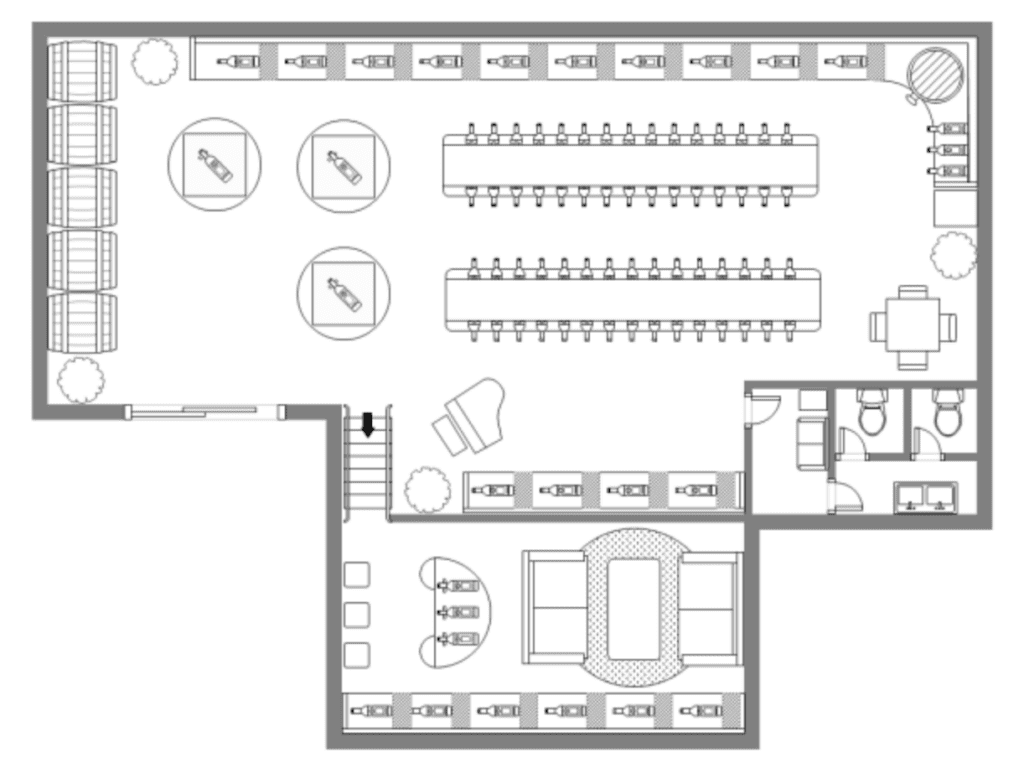
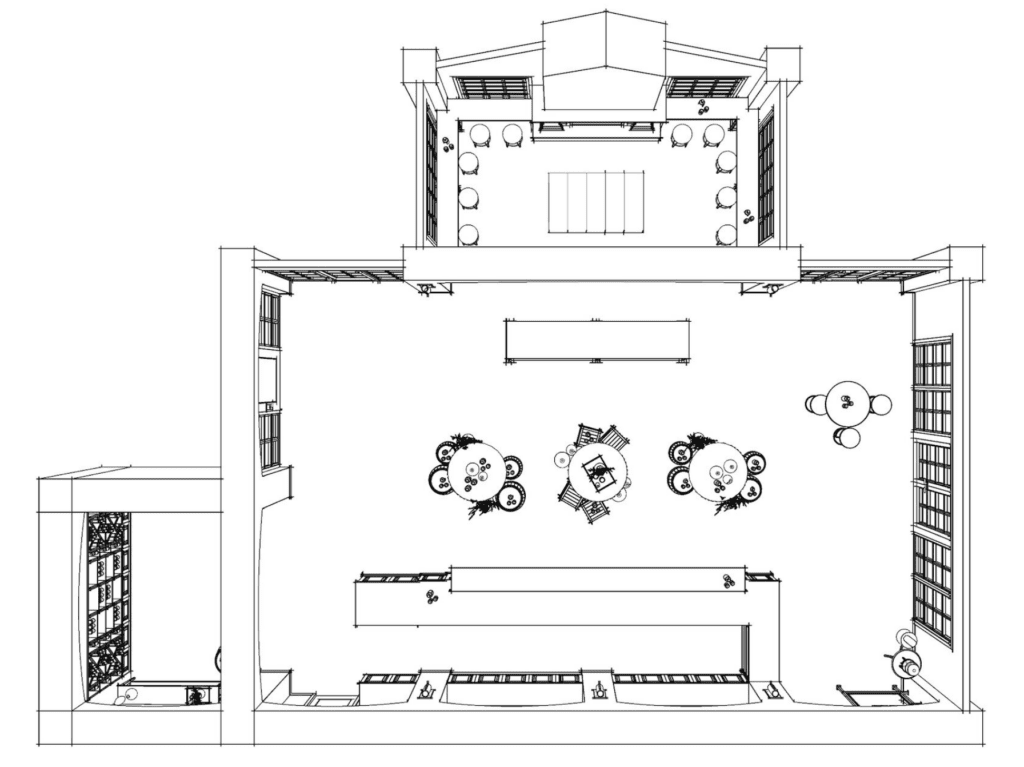
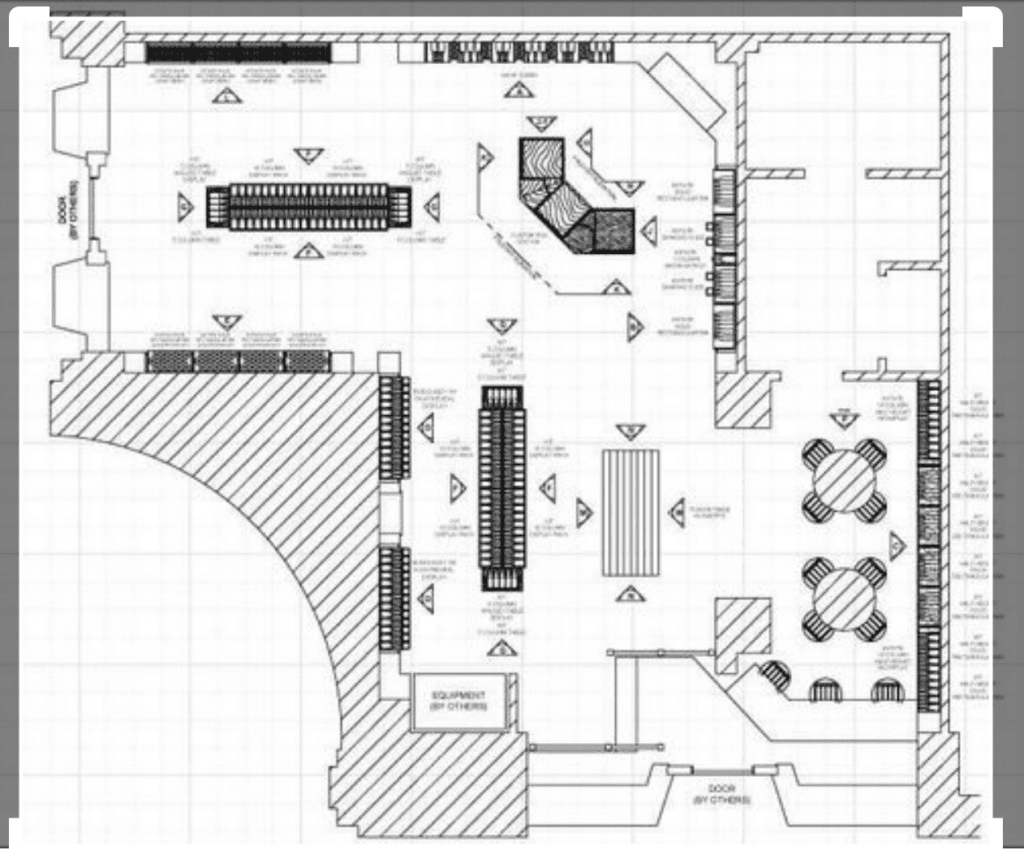
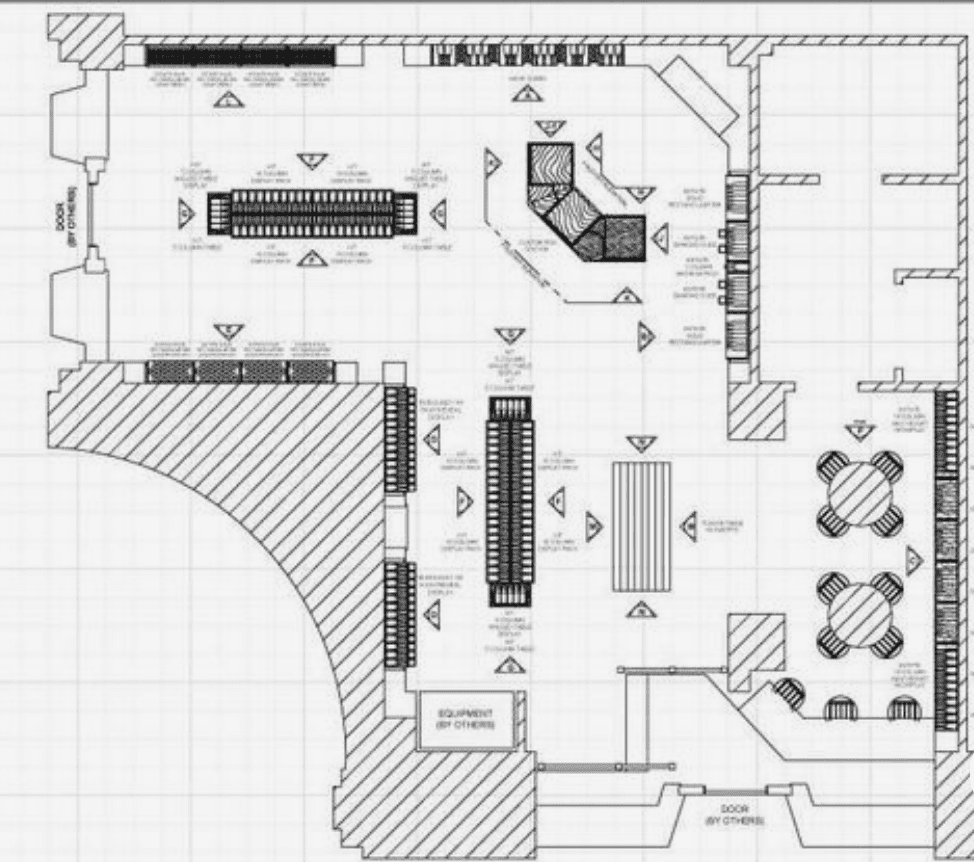
With the proper design, if you pluck a few bottles for dinner your wine room or cellar will not look empty with the proper design – a cellar could be half-empty without looking half-empty.
For example, if you have a showcase display with all labels in the cellar facing forward, you’d notice every bottle removed.
To create the illusion of depth and content, build out those prized spots for viewing, but for bulk storage, focus on horizontal bins with only the capsules (top view of the foil-covered head) showing.
You could remove 20 bottles from those bottom bins without showing much.
Finally, climate control is a must, but not complicated.
Humidity somewhere between 50 to 70%, temperature should be 55 to 65 degrees.
Building a Wine Room – What to Consider When Building a Wine Room
Pick the right spot for your home or commercial wine cellar based on the layout, light and footfall.
Wherever it is, make sure you’re able to maintain climate-controlled conditions.
The basement is a common place to build your cellar as it’ll be easy to maintain consistent temperature and humidity there.
Under-the-stairs is another smart space that you could utilize.
Building a Wine Room – Pick the Right Location
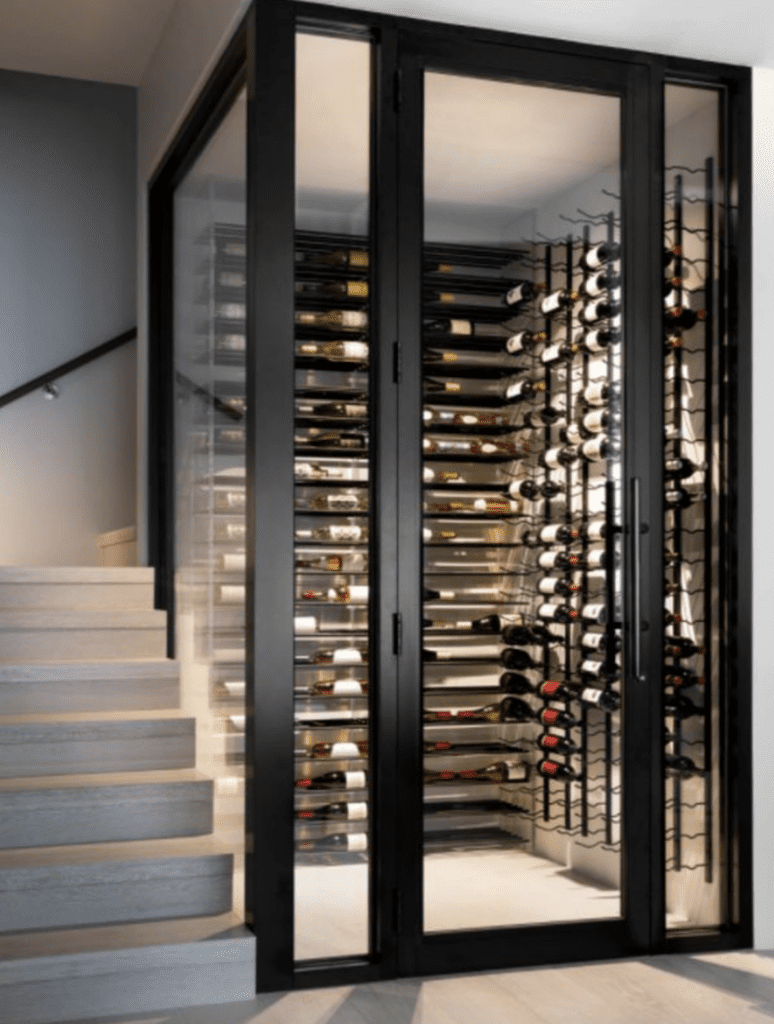
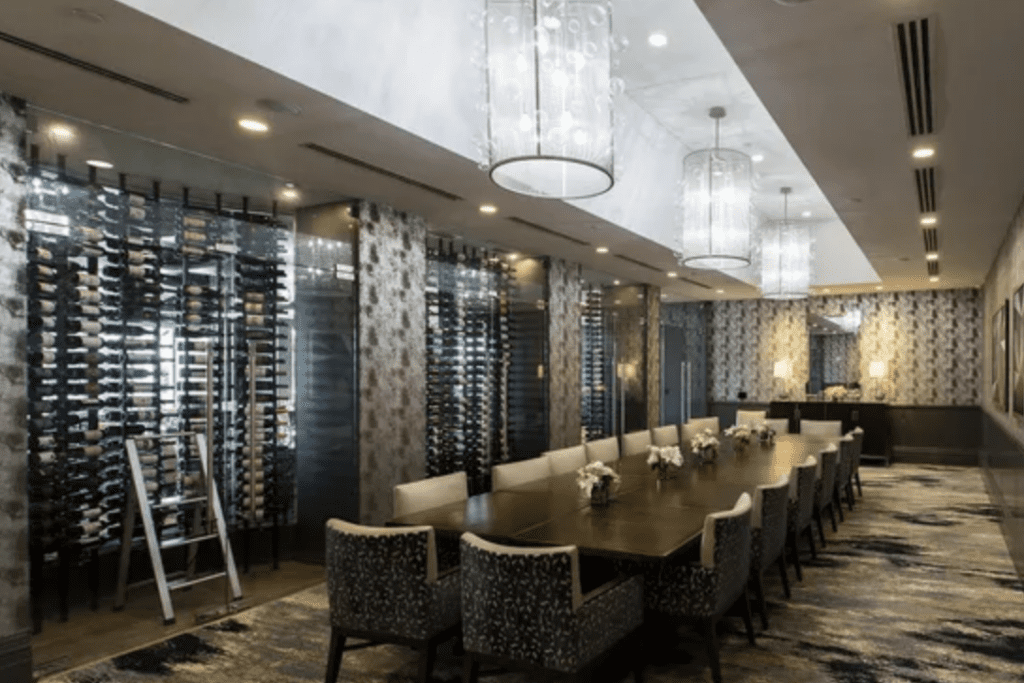
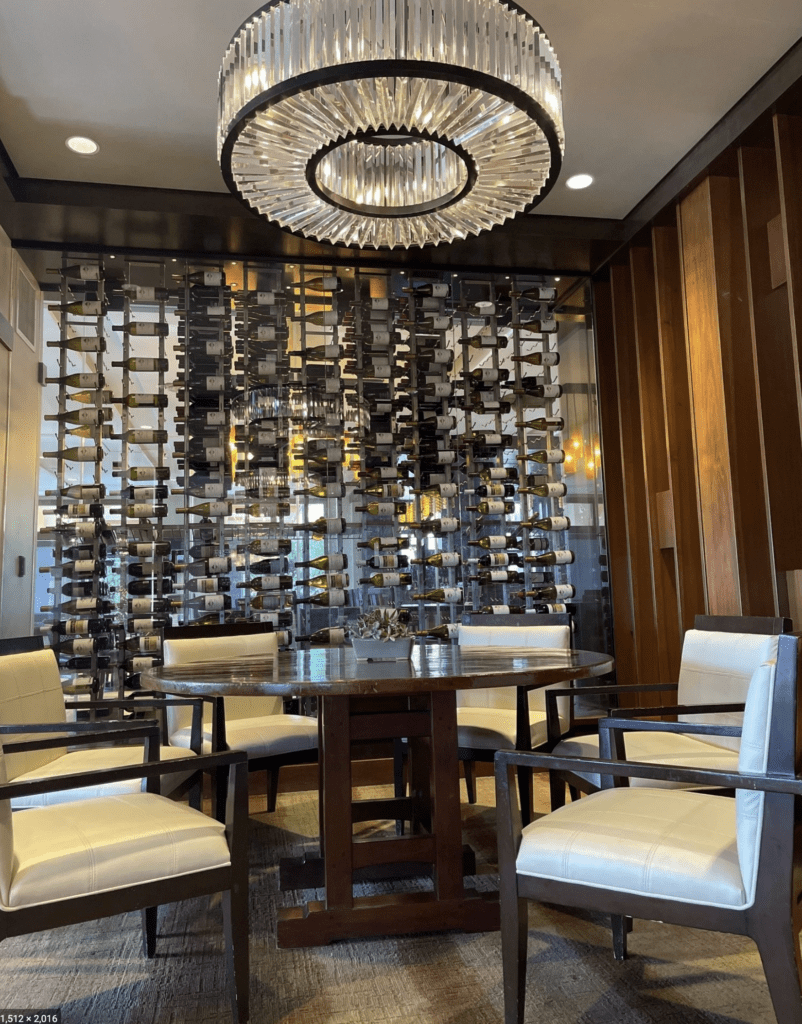
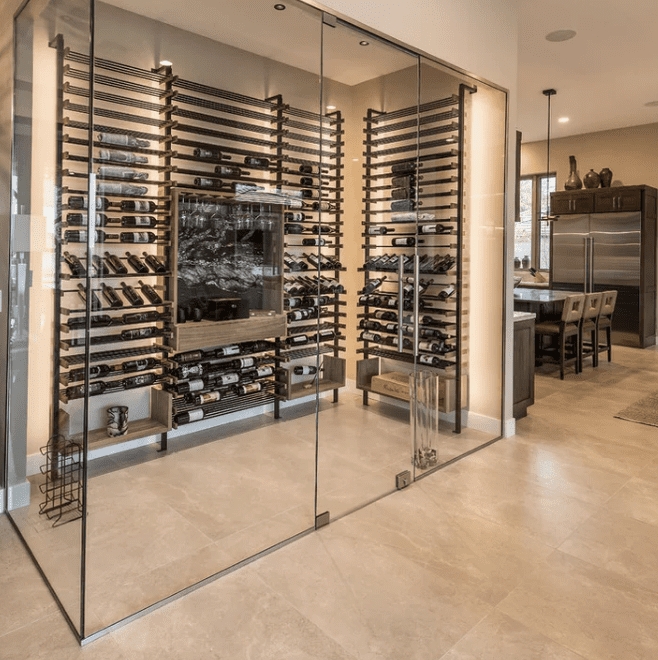
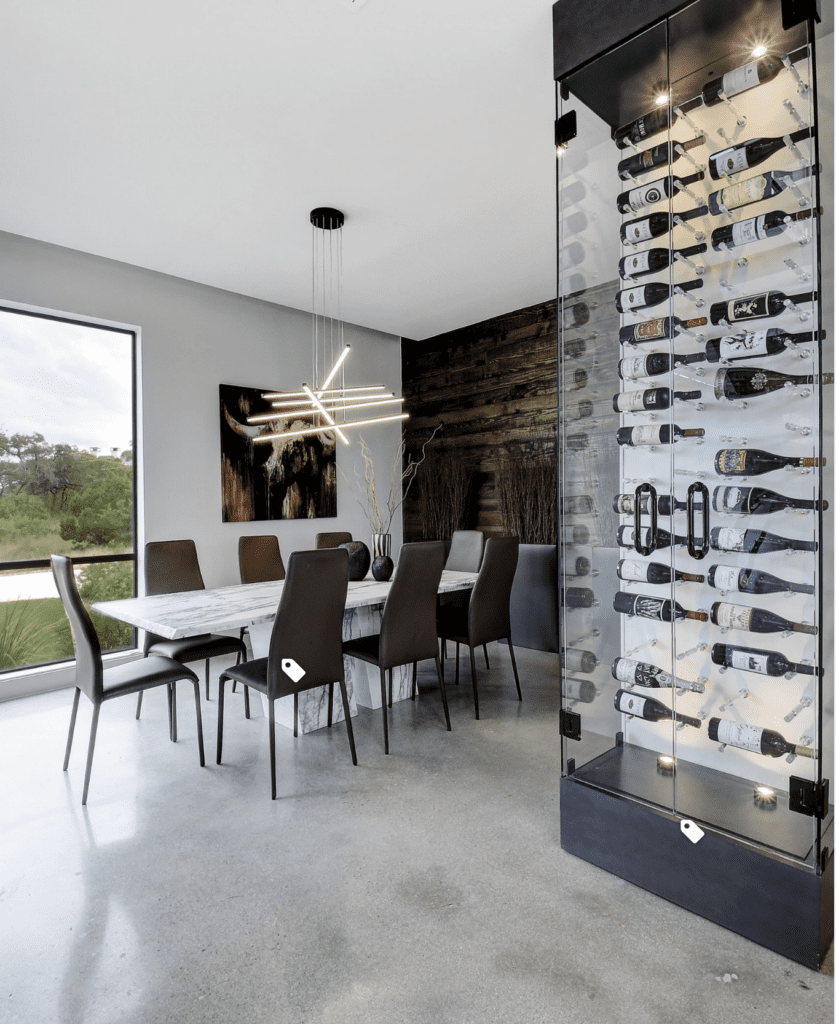
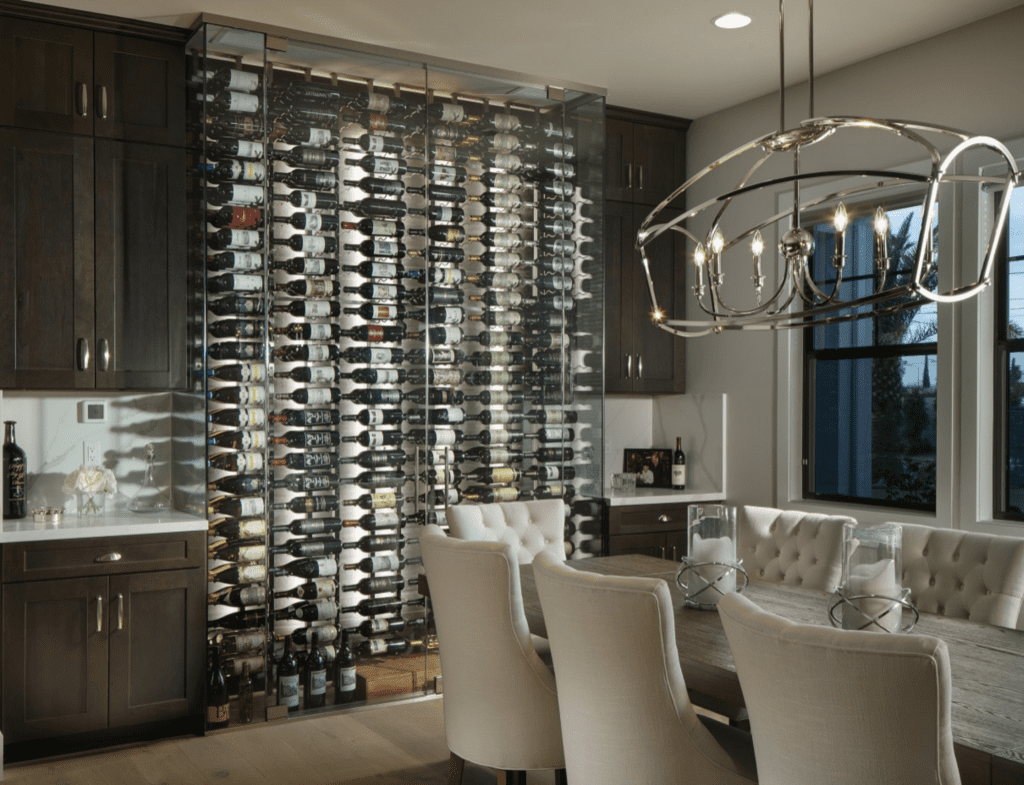
Building a Wine Room – Keep the Temperature and Humidity Stable
Insulate the cellar to maintain the right temperature range and to act as a good vapor barrier.
Large wine cellars may need wine cooling systems and an exhaust room to absorb the heat.
Or, choose a wine cooler or cabinet that comes with a proper cooling mechanism.
If your wine cellar is in a dry area, you’ll need a humidifier to maintain the right humidity.
You could get chiller with an integrated humidifier.
Building a Wine Room – Keep Bottles Away From Intense Light and Vibration
Your wine cellar needs to provide vibration-free thermoelectric cooling.
A basement makes a perfect storage spot with minimum footfall and vibrations.
In a wine cabinet or cooler, remember to keep your bottles away from the door so that they don’t rattle each time you open to get a bottle out.
Also, store your bottles individually and not one over the other.
So you won’t have to move one to take another out.
Building a Wine Room – Make Sure Your Wine Cellar Door is a Strong One
Your wine cellar door should be strong and adequately insulated that closes with a tight seal.
If you choose a glass door, make sure it is double-paned and has exterior-grade insulation.
Ideally, there shouldn’t be any windows in the wine cellar.
If you do have one or two, make sure they are properly sealed as well.
Building a Wine Room – Store Wine Bottles Horizontally
Store your bottles with corks horizontally so that the corks don’t dry out.
You can store other wine bottles anyway you like, but arranging them horizontally helps you maximize cellar space and easily access them.
Building a Wine Room – Store Open Wine Bottles Properly
An open wine bottle can last for around five days if you store it properly.
Remember to recork it immediately and tightly.
When you do that, place some wax paper around the cork and close it shut.
If you’ve lost the cork, use a rubber wine stopper to the same effect.
Or use a wine vacuum pump to suck the air out of the bottle before you cork it.
Building a Wine Room – Pick the Right Flooring
Opt for hardwood, tile, stone, or marble for your cellar flooring.
A carpet is a big no-no as it will develop mold and mildew thanks to the high humidity levels.
Building a Wine Room – Pick the Right Type of Lighting
If you have an extensive wine room, decide whether you prefer a warm, cozy vibe or a brighter ambiance.
You could go for bright LED lights and track lights or chandeliers for a mood-lit vibe.
Highlight any specific areas or displays with overhead lighting, preferably low-voltage LED lights.
Remember that you cannot expose your wines to excessive light.
Go for lighting that is low intensity and generates low amounts of heat.
And, stay away from fluorescent, halogen, and incandescent lamps in your cellar.
Building a Wine Room – Install Security Systems
Keep your cellar door locked always to prevent unauthorized use.
Install safety alarms or monitoring systems and cameras to prevent any break-ins.
Insure and Protect Wine From Natural Disasters and Other Hazards
Insure your wine cellar with a wine collection insurance to protect against natural disasters or power failure or breakage.
Take a blanket policy to cover all bottles that are valued under $1,000 each.
And, go for a standalone policy to insure your rare, expensive wines individually.
Building a Wine Room – Materials to for Wine Racks
A wine rack is a set of shelves for the organized storage of wine.
Wine racks can be built out of a number of different materials.
The size of the rack and the number of bottles it can hold can vary widely.
Wine racks can be located in a winemaker’s professional wine cellar as well as private homes for personal collections.
It’s important to inventory and forecast how many different size bottle you may have, 750 ML, Pinot, Magnums, etc. as they are different dimensions.
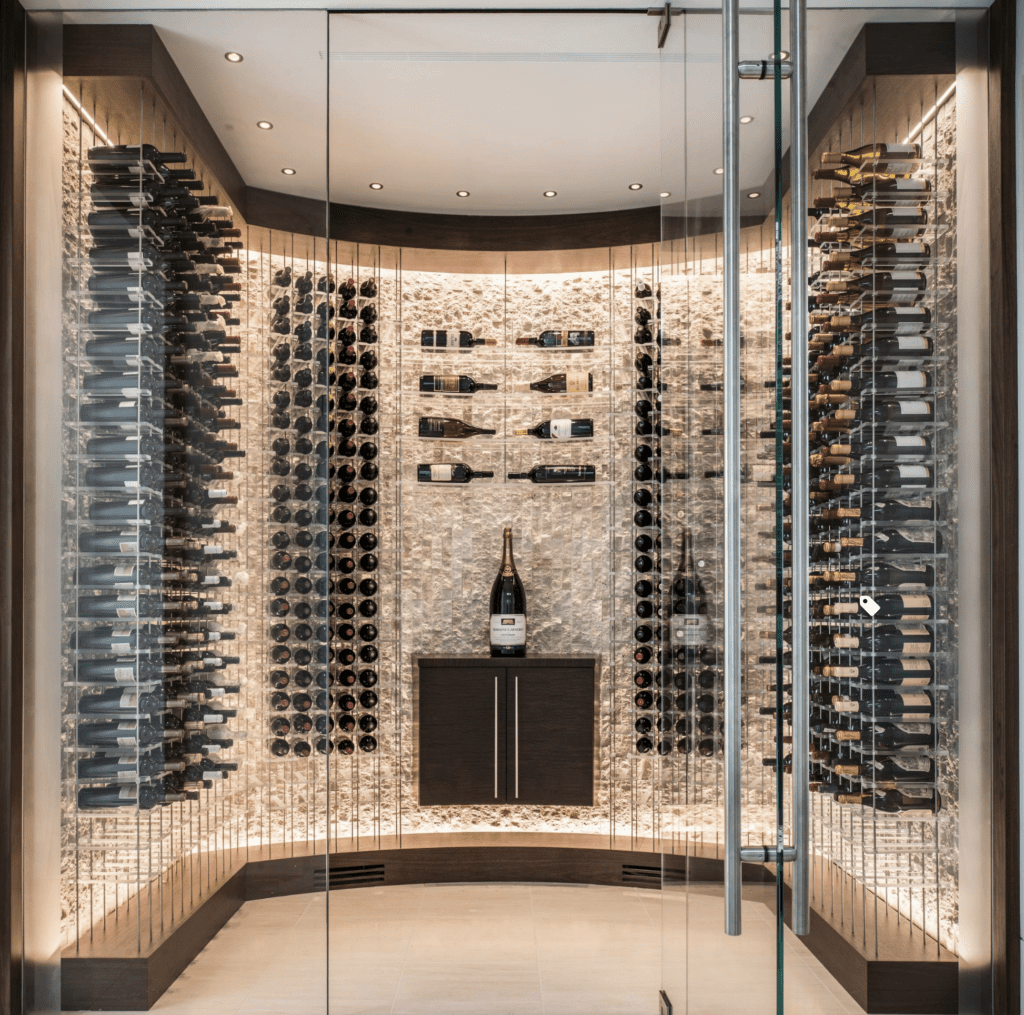
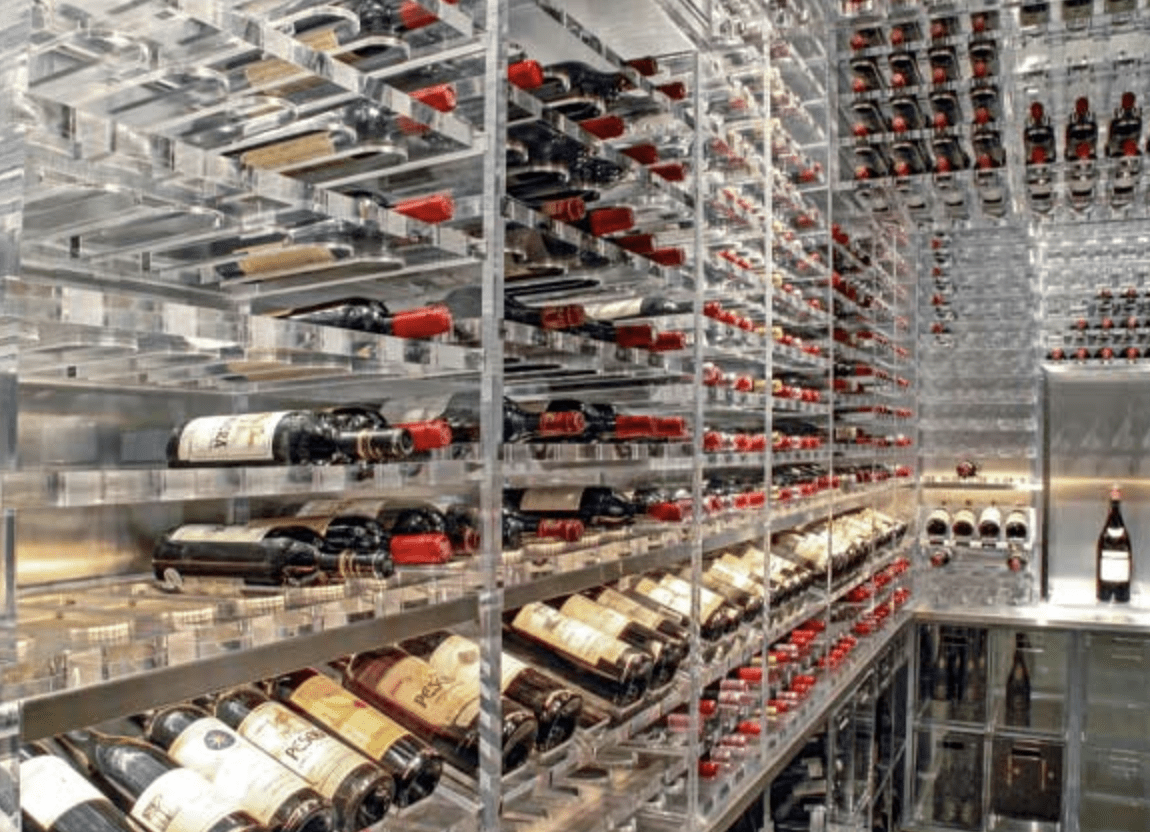
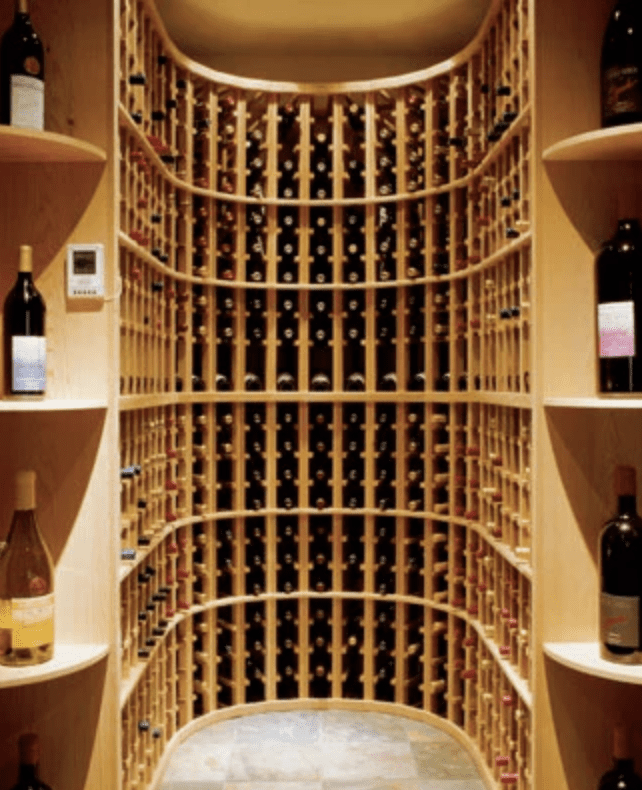
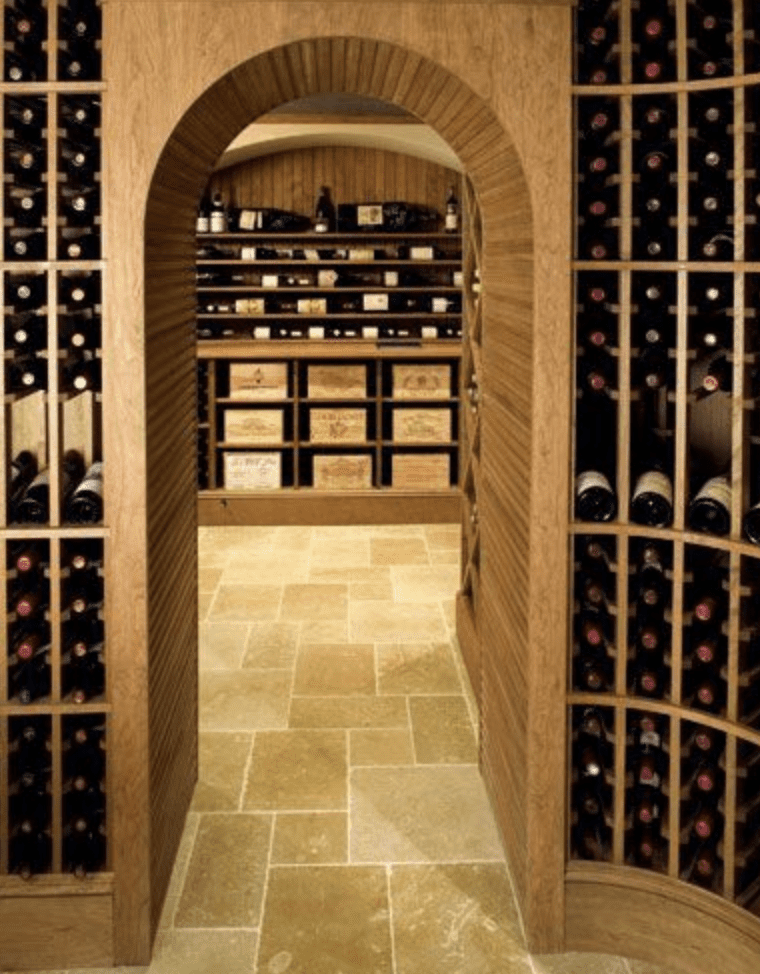
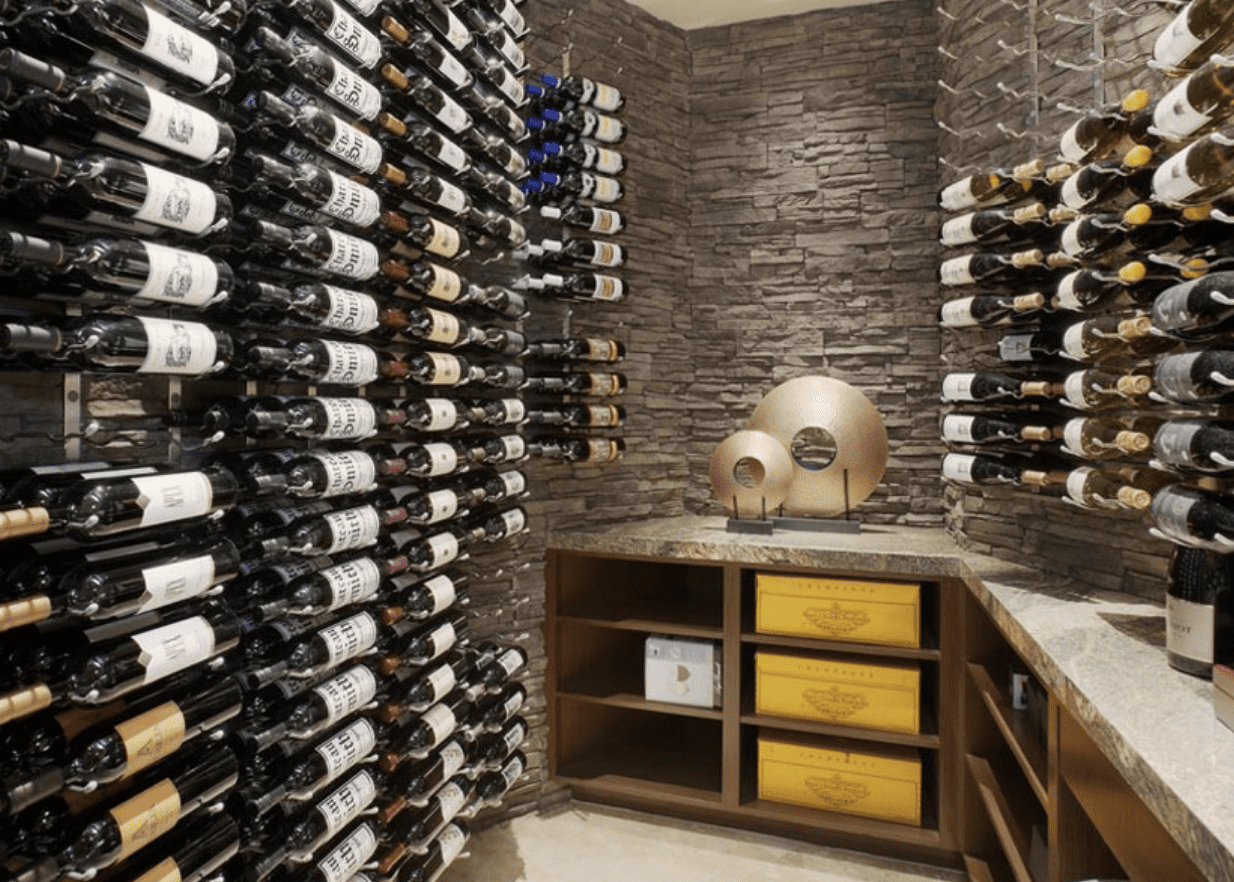
Building a Wine Room – Wood Wine Racks
Wood is the most popular medium when it comes to wine rack construction.
It is easily obtainable and very workable.
Many types of wood are used. Premium Redwood, All Heart Redwood, Mahogany, Pine, Red Oak, Cedar, and Fir are just a few of the various options.
Cedar is popular choice because of the aroma is gives off.
This aroma is also its downfall—it can penetrate the wine via the cork.
Fir is another popular choice—it also is very strong and comes in a natural cream color.
Finding the perfect storage solution for your wine collection can be an intimidating job with so many aspects to deliberate and choices to decide between.
To make this job a tiny bit easier for you, we have put together our first ultimate guide to choosing the best materials for wine racks.
Carry on reading to find out what type of material will best suit your wine rack needs.
Building a Wine Room – Acrylic Wine Racks
The transparent acrylic material is different from the traditional wine storage idea. But actually it is often used in bars, or wine shops which need to better display the wine and spirits.
This transparent material together with ubiquitous light shows the wine better and even makes a sense of cyberpunk into the environment.
Though some people think an acrylic wine rack is not a good idea, it’s just a display shelf only for eye-catching.
Wine racks need constant temperature and humidity, and you shouldn’t clean the bottles and rack frequently.
When cleaning, using a dry cloth or small vacuum cleaner to remove the dust on the surface is enough, don’t use a wet cloth to wipe them.
Building a Wine Room – Metal Wine Racks
Metal is another popular choice for wine racks.
Although it is not as easy to work with as wood, metal pieces tend to have greater variety.
With metal, more fluid and flowing shapes can be made, which is impossible with wood.
Metal can also be painted to match any decor.
Metal racks are a good idea for both short- and long-term wine storage.
There are metal wine rack options that focus on more aesthetic, minimalist design that hold fewer bottles than wood counterparts as well as metal wine rack configurations that can store the same number of bottles per square foot as the wood counterpart.
Building a Wine Room – Stainless Steel Wine Racks
Stainless steel wine racks are commonly placed in the kitchen.
In fact, stainless steel wine racks have become a complementary accessory to today’s modern living as with the abundance of stainless steel kitchen packages and appliances which gained favor in the modern market.
Wine racks made of stainless steel are perfect to store wine bottles in the kitchen due to the material’s resistance to corrosion and staining.
Stainless steel can be easily cleaned and it may also be 100% recycled.
This material has the greatest resistance to oxidation and so it does not rust.
Stainless steel wine racks are increasing in popularity because of their ability to maintain the quality and appearance for longer periods of time, especially in a humid space such as the kitchen.
Stainless steel wine racks are passivated in order to get a dull, mat look and electropolished with a reflective sheen, and bead blasted which leaves a texture look behind.
Stainless steel wine racks also come in a variety of shapes, designs and sizes and although they are commonly used in kitchens, they may be placed in any other room of the house.
Some double as both racks and coolers, with temperature controlled, vacuum sealed glass doors which are tinted to keep out unnecessary light and regulate temperatures .
Building a Wine Room – Wrought Iron Wine Racks
Wine racks made of wrought iron can store wine bottles safely at the same time with changing the look of one’s home, office or bar.
Many of these wine racks may be wall mounted and often they are designed as forms of sculpture.
Due to the properties that wrought iron has, wine racks that are made of this material are the most surprising and innovative in shape and design and as a result, they are often used more for decorative purposes than for storing wine.
They come in various sizes and yet it is common that a wine rack made of wrought iron holds only one bottle of wine.
Building a Wine Room – Specialty Wine Racks
Most wine racks are constructed to hold the standard 750 ml bottles. To hold oversize or different shaped bottles special wine racks needs to be constructed.
Wine racks have increased in popularity among the wine consumers and, therefore wine racks manufacturers have come up with more daring and innovative designs, shapes and functionality of these furniture pieces.
Many buyers use wine racks as pieces of ornament and not only as a storage method.
Hence, the industry of wine racks has developed, bringing more wine racks with improved functionality.

